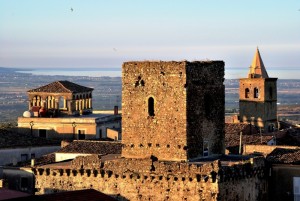 Tangible Cities
Tangible Cities
Materiality and Identity in Southern Italy (1100 – 1800)
6 – 7 July, 2017
Bibliotheca Hertziana – Max Planck Institute for Art History, Rome
A two-day workshop organized by:
Stefano D’Ovidio, Joris van Gastel, and Tanja Michalsky
“Materiality conveys meaning. It provides the means by which social relations are visualized, for it is through materiality that we articulate meaning and thus it is the frame through which people communicate identities.” (Sofaer, Material Identities, 2007) Whereas in recent research in art and architectural history, materials have gained currency, the significance of the specific materiality of the world we inhabit still remains largely uncharted territory. Yet, a focus on materials may draw attention to unexpected continuities and discontinuities between different art forms, epochs, and geographical areas. Moreover, as Georges Didi-Huberman (1998) has shown, such a focus is pertinent to historiography as well, revealing the implicit hang-ups and taboos of our discipline.
Taking its key from these recent debates, this workshop seeks to explore the ways in which, between the Middle Ages and Early Modernity, different artistic materials create meanings and identities in the context of the Southern Italian city. In doing so, it hopes to draw attention to the role materials might have played in creating the specific narrative of Southern Italy in art history and to how, conversely, a focus on materiality might lead to a different story. To what extent did materials carry associations of a local geological and natural context? How do they relate to the city’s past? And how do these contribute to the creation of local identities? Here one can think of particular local materials, such as the versatile pietra leccese in Lecce or the colored marbles of Sicily, spolia that make materially present a city’s Greek or Roman past, but also materials that travelled from afar and carried traces of their far-away origins, such as the costly lapis lazuli. Along with the connections between materiality and identity, the workshop aims to lay bare the reception of specific materials in various textual sources, including art literature, contracts, travel guides, but also scientific treatises.
We invite proposals for both case studies and more theoretically informed papers. Possible perspectives include (but are not confined to):
– The use of spolia and the role of a Greco-Roman past in local identities;
– The relationship between materials and discourses of center and periphery;
– Marginalized local traditions related to a specific material;
– The reception of materials in art literature and whether or not art criticism has favored or prevented the use of specific materials;
– The relationship between materials and colonial issues;
– The manner in which the availability of specific materials has favored the development of local artistic traditions and debates.
Please send an abstract (300 words max.), a paper title, and a short CV to Stefano D’Ovidio (dovidio@biblhertz.it) and Joris van Gastel (gastel@biblhertz.it).
The deadline for submissions is 29 January, 2017.
Travel and accommodation will be covered by the Bibliotheca Hertziana in accordance with the provisions of the German Travel Expenses Act (Bundesreisekostengesetz).
Source : <http://arthist.net/archive/14421>

Leave a Reply
You must be logged in to post a comment.